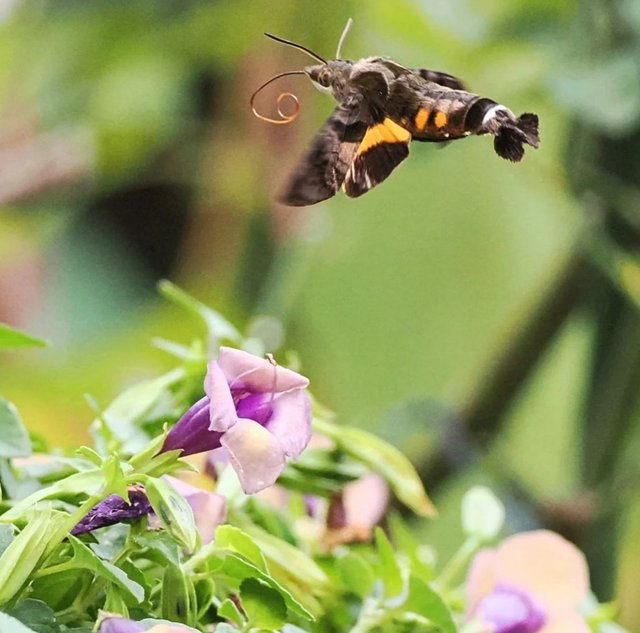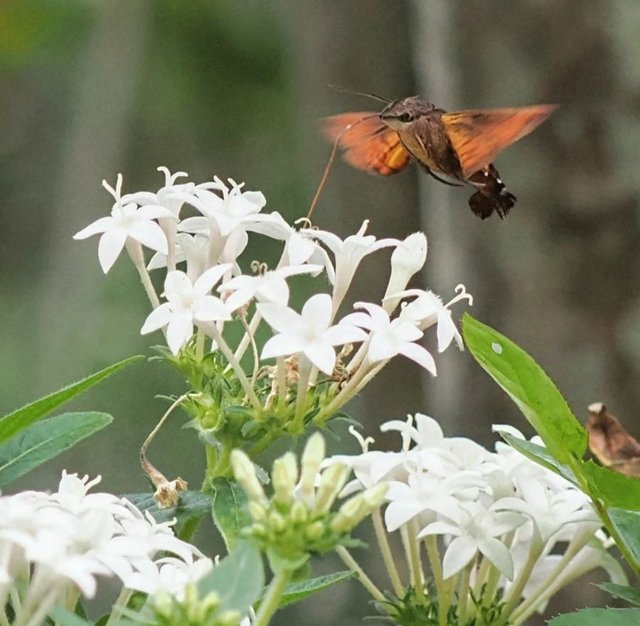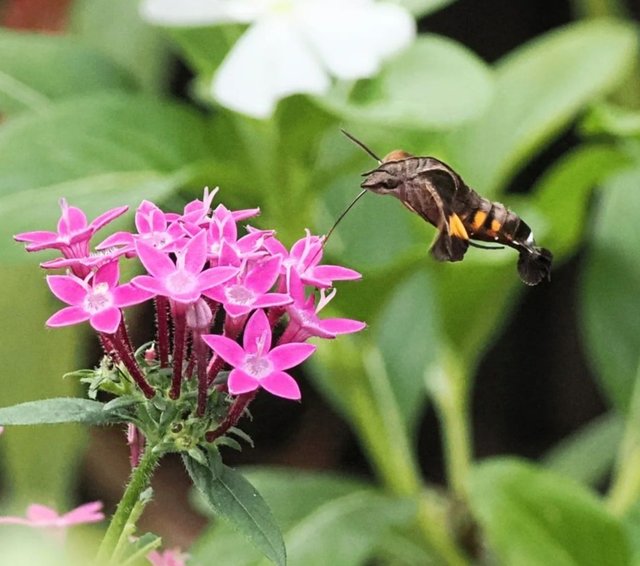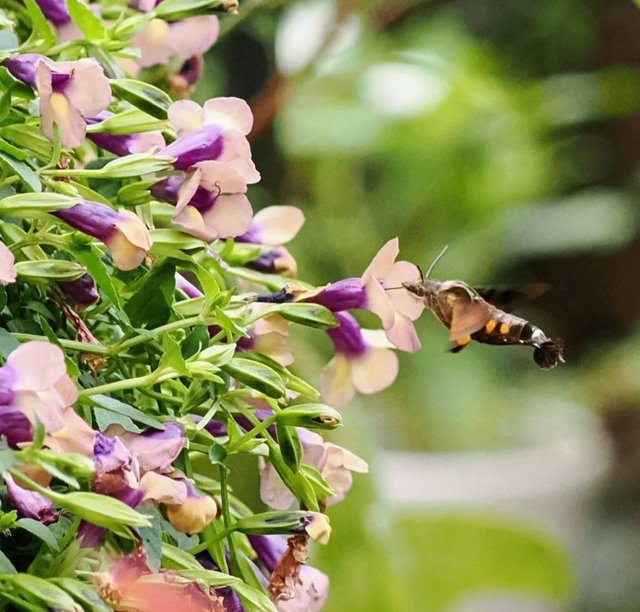So Beautiful Hummingbird Hawk-Moth Insect
The hummingbird hawk-moth is a fascinating and unique moth species with characteristics that make it stand out in the world of insects. This moth is often mistaken for a hummingbird due to its appearance and behavior, specifically the way it hovers over flowers while feeding, similar to the hovering technique used by hummingbirds. Its rapid wing movements, impressive flying skills, and even the faint humming sound it produces add to this resemblance. The hummingbird hawk-moth can be found across Europe, Asia, and North Africa, with populations even migrating seasonally in search of favorable climates and food sources.
Physical Characteristics
The hummingbird hawk-moth is a medium-sized moth with a wingspan of around 2 inches. Its forewings are typically grayish-brown, while the hindwings are orange with a distinctive black border. The body is robust, covered in brownish fur, which adds to its hummingbird-like appearance, especially as it hovers. The antennae are short and clubbed, distinguishing it from other moths that typically have feathery antennae. Its coloration provides excellent camouflage against tree bark, rocks, and other natural surfaces when it rests.
One of the most remarkable features of this moth is its long proboscis, which it uses like a straw to drink nectar. The proboscis can be nearly twice the length of its body, allowing the moth to feed from deep, tube-shaped flowers that other insects may find inaccessible. The hummingbird hawk-moth’s specialized mouthpart is a perfect adaptation for sipping nectar while remaining airborne.
Feeding Behavior and Hovering Skills
The hummingbird hawk-moth’s feeding behavior is one of its most distinguishing traits. Like a hummingbird, it hovers in place as it feeds, beating its wings rapidly—up to 85 times per second. This ability to hover gives it access to a wide variety of flowers, many of which may not be reachable by insects that need to land to feed. It feeds during the daytime, unlike most moths that are nocturnal. This diurnal behavior is another reason for its frequent confusion with hummingbirds.




Thanks For Reading
Device Information
| Device | cannon eos 600D |
|---|---|
| Lens | 55-250 zoom leans |
| Location | Myanmar |
